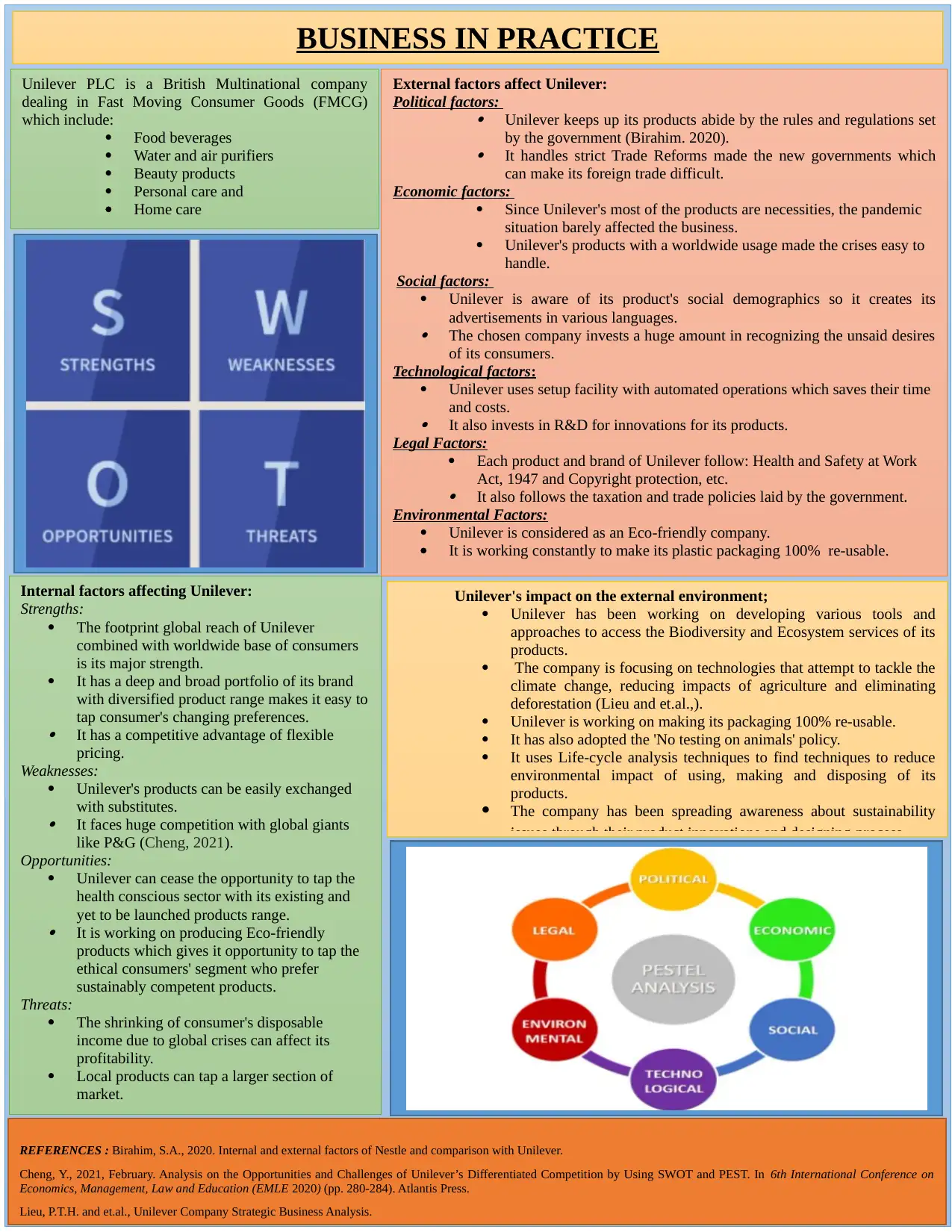Unilever PLC: A Case Study on Internal and External Business Impact
VerifiedAdded on 2023/06/18
|1
|641
|99
Case Study
AI Summary
This case study provides an analysis of Unilever PLC, a British multinational company in the Fast Moving Consumer Goods (FMCG) sector, focusing on the internal and external factors that influence its business practices. The external analysis covers political, economic, social, technological, legal, and environmental (PESTLE) factors, highlighting Unilever's adherence to government regulations, handling of trade reforms, resilience during the pandemic, and investments in R&D and eco-friendly practices. The internal analysis uses a SWOT framework to identify Unilever's strengths, weaknesses, opportunities, and threats, emphasizing its global reach, diversified product range, competitive pricing, and challenges from competitors and economic conditions. The study also examines Unilever's impact on the external environment, including its efforts in biodiversity conservation, climate change mitigation, sustainable packaging, and ethical policies such as 'No testing on animals'. It concludes by referencing various research articles that support the analysis of Unilever's strategic business practices.






![[object Object]](/_next/static/media/star-bottom.7253800d.svg)